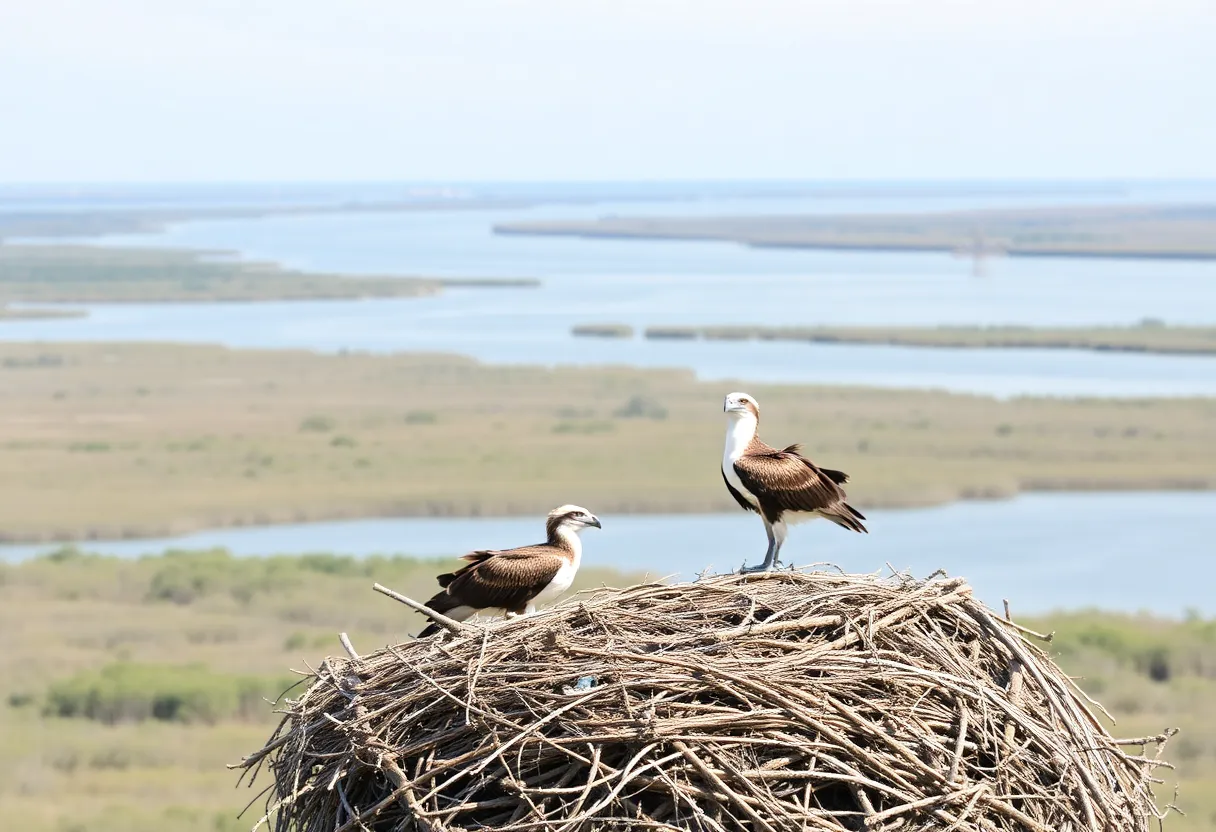News Summary
The Delmarva Peninsula in Virginia is experiencing a dramatic decline in its osprey population, with a reported 90% decrease in nesting pairs. A recent study highlighted that food scarcity, particularly of Atlantic menhaden, may be the primary cause. Experts warn this could signal broader ecological issues in the region’s marine ecosystem. While there are calls for protective measures for menhaden due to their crucial role for various species including ospreys, ongoing disputes with the fishing industry complicate conservation efforts. Immediate action may be necessary to restore balance to this fragile ecosystem.
Virginia’s Delmarva Peninsula is witnessing a troubling decline in its osprey populations, with a recent study revealing a staggering 90% decrease in nesting pairs. This alarming trend raises concerns about a potential collapse of the local osprey population, according to a report from the Center for Conservation Biology at William & Mary. In 1987, there were 83 nesting pairs of ospreys recorded in the region, whereas this year, only 9 pairs have been observed.
The decline in osprey numbers is largely attributed to a shortage of their primary food source: Atlantic menhaden. This fish species is crucial to the osprey’s diet, and researchers have indicated that issues surrounding food availability could be at the heart of the drastic reduction in nesting pairs. Ospreys are entirely fish eaters, making them pivotal indicators of the health of local fish stocks.
The report highlights that the research conducted this year did not specifically examine the diets of ospreys, leaving some questions unanswered about their food sources. However, experts note that these birds, sitting at the top of their food chain, can reflect broader ecological issues through their population trends. Although the data suggests significant declines, it is important to note that ospreys are resilient and do not immediately face extinction threats.
The Chesapeake Bay Foundation points out that menhaden populations have been low for the past 20 years, following a drastic decline in the 1990s. This vital fish also supports not only ospreys but also other commercial fisheries, including striped bass, which adds another layer of concern regarding the overall health of marine ecosystems in the area.
Worryingly, evidence is accumulating that links the scarcity of menhaden to unsuccessful osprey chick fledging. With ospreys requiring an average of 1.15 chicks per year to maintain stable populations, many areas are currently reporting reproduction rates below half that average. In fact, some places are seeing reproduction levels fall below 10% of what is needed.
There exists an ongoing tension between environmental groups, which are advocating for protective measures for menhaden, and the fishing industry, which contests claims linking overfishing to the decline of osprey populations. Virginia currently stands out as the only East Coast state permitting industrial-scale menhaden fishing, which is a point of contention among conservationists.
The Atlantic States Marine Fisheries Commission is now considering additional management measures aimed at safeguarding both menhaden and the species that depend on them, including potential seasonal closures and fishing quotas. The decline of menhaden not only incites concerns about the future of various important fish species but also raises alarms regarding the sustainability of the entire Chesapeake Bay ecosystem.
Conservationists and fishermen alike express anxiety about the ramifications of overfishing on essential predatory species residing in the Chesapeake Bay. They are calling for more stringent measures to ensure that both menhaden and the reliant ospreys can thrive. The ecological situation is becoming ever more complex, highlighting the urgent need for balanced management strategies to preserve the marine food chain.
Without proactive measures and a greater understanding of the dynamics at play, the ongoing decline in osprey numbers serves as a potent reminder of the potential fragility of coastal ecosystems and the interconnectedness of marine species. As the situation unfolds, the implications of these ecological shifts will need careful monitoring and responsive conservation efforts.
Deeper Dive: News & Info About This Topic
HERE Resources
Additional Resources
- WYDaily: Osprey Decline in Virginia Signals Broader Environmental Problems
- Wikipedia: Osprey
- ABC News: Ospreys Face Challenges with Chick Mortality
- Google Search: Osprey Population Decline
- WYDaily: Juneteenth Events in Greater Williamsburg
- Google Scholar: Osprey Population Decline
- WYDaily: Menhaden Decline Threatens Virginia’s Ecosystem
- Encyclopedia Britannica: Menhaden

Author: STAFF HERE WILLIAMSBURG WRITER
The WILLIAMSBURG STAFF WRITER represents the experienced team at HEREWilliamsburg.com, your go-to source for actionable local news and information in Williamsburg, James City County, and beyond. Specializing in "news you can use," we cover essential topics like product reviews for personal and business needs, local business directories, politics, real estate trends, neighborhood insights, and state news affecting the area—with deep expertise drawn from years of dedicated reporting and strong community input, including local press releases and business updates. We deliver top reporting on high-value events such as Williamsburg Farmers Market, Yorktown Market Days, and Busch Gardens Food & Wine Festival. Our coverage extends to key organizations like the Greater Williamsburg Chamber of Commerce and Colonial Williamsburg Foundation, plus leading businesses in education and hospitality that power the local economy such as College of William & Mary, The Williamsburg Winery, and Sodexo. As part of the broader HERE network, including HEREVirginiaBeach.com, we provide comprehensive, credible insights into Virginia's dynamic landscape.





